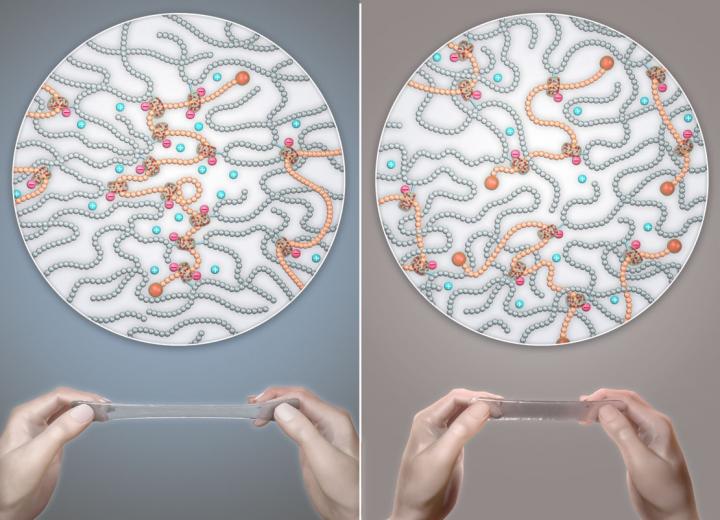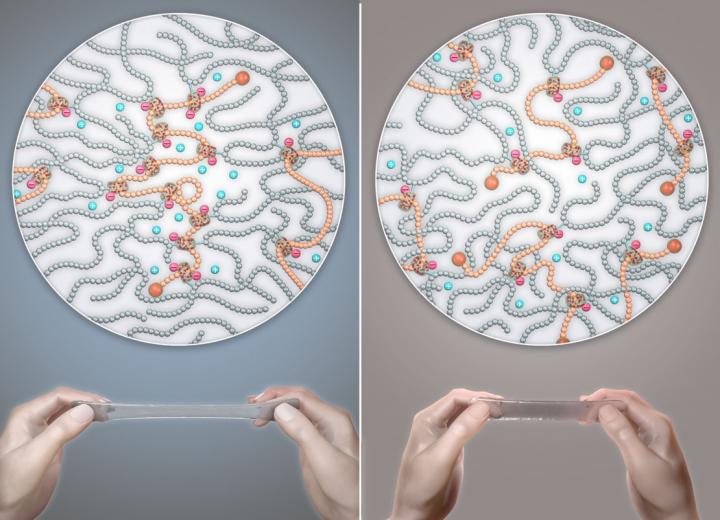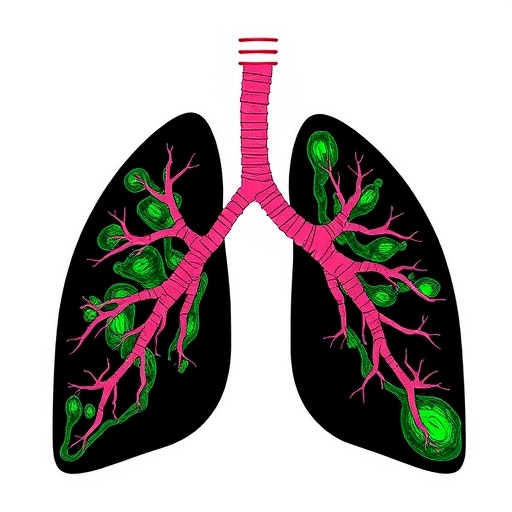
Credit: Yukikazu Takeoka
Nagoya, Japan – A polymer gel consists of a three-dimensional cross-linked polymer network swollen with liquid molecules. However, most conventional polymer gels are brittle because stress concentration readily occurs in their cross-linked polymer network structure. The mechanical properties of polymer gels need to be improved to facilitate their application as, for example, molecular sieves and superabsorbent materials.
An international researcher team from Nagoya University and The University of Tokyo have now found a way to increase the fracture resistance of polymer gels using a design based on molecular "beads" and polymer "threads." The molecular beads are modified cyclodextrin rings, which are threaded onto polyethylene glycol (PEG) threads. The cyclodextrin rings contain groups that allow the threaded structures to be cross-linked to form a three-dimensional polymer network that can be used as a polymer gel. The findings were recently published in ChemComm.
"We investigated the effect of the molecular weight of PEG per cyclodextrin ring on the strain and rupture strength of the resulting gels," study coauthor Yukikazu Takeoka says.
The researchers found that their polymer gels are resistant to fracture because the cyclodextrin beads can slide along the PEG threads when a force is applied, preventing stress concentration. The magnitude of this effect increases with the molecular weight of PEG per cyclodextrin ring, resulting in gels with greater strain and rupture strength. That is, the ability of the cyclodextrin beads to slide along the polymer threads increases with the length of thread between beads.
"The ability to improve the fracture resistance of polymer gels by increasing the molecular weight of polymer units for each cross-linking cyclodextrin ring is a convenient solution to overcome the problem of the brittleness of conventional polymer gels," lead author Kana Ohmori explains.
This approach to improve strain and rupture strength using mobile cross-linking molecular beads threaded on polymer chains should allow polymer gels with desired mechanical properties to be fabricated.
###
The article "Molecular weight dependency of polyrotaxane-cross-linked polymer gel extensibility" was published in ChemComm at DOI: 10.1039/c6cc07641f
Media Contact
Koomi Sung
[email protected]
http://www.nagoya-u.ac.jp/en/
############
Story Source: Materials provided by Scienmag





